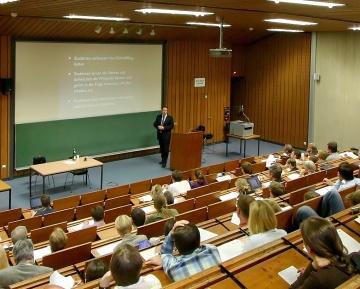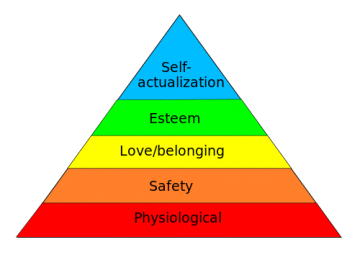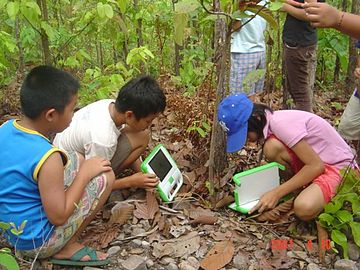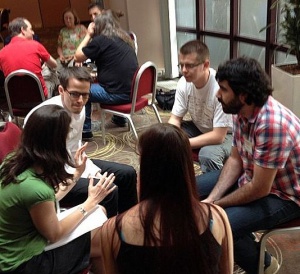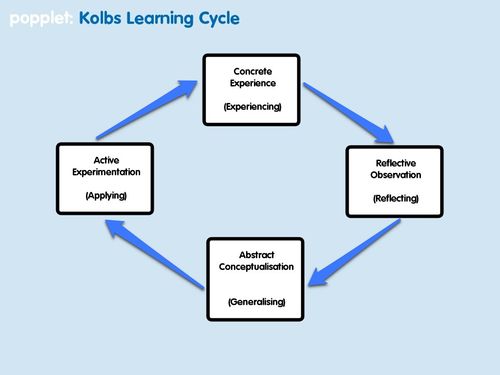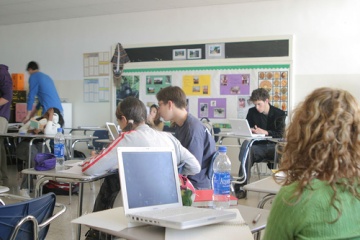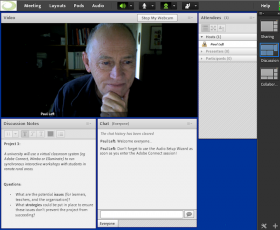GDTE Development/Adult Learning Approaches
GDTE microcourse: Adult Learning Approaches
Contents
- 1 Planning
- 2 Course materials
- 3 Session 1: Orientation
- 4 Session 2: Traditional theories of learning
- 5 Important!
- 6 Objectives
- 7 Video signpost
- 8 Introduction
- 9 Behaviourism
- 10 Question
- 11 Humanism
- 12 Cognitivism
- 13 Question
- 14 Constructivism
- 15 E-Activity
- 16 Summary
- 17 Session 3: Current approaches
- 18 Important!
- 19 Objectives
- 20 Video signpost
- 21 Introduction
- 22 Adult learning theories
- 23 Scenario: Adult Learners
- 24 Experiential learning
- 25 Deep and surface learning
- 26 Situated learning
- 27 Work-based learning
- 28 E-Activity
- 29 Summary
- 30 Session 4: Engaging Learners
- 31 Important!
- 32 Objectives
- 33 Video signpost
- 34 Introduction
- 35 On campus
- 36 Online
- 37 E-Activity
- 38 Summary
Planning
Design and development team
- Primary author:
- Editorial and learning design review:
- Open peer review from OERu partner institutions.
Course description
Course metrics:
- Notional learning hours: 40 hours
- Duration: 4 weeks, 10 hours per week including assessment
- Assessment: 10 hours
- Formal credit option: Yes
- Course: One micro course from the Learning and Teaching in Practice
- Credential: Graduate Diploma in Tertiary Education
- Level: 3rd year Bachelor Degree
What's it about?:
What will I learn?:
What's involved?:
What prerequisites should I have, if any?:
Design blueprint
Metadata
Intended target audience
Prerequisite knowledge
Course aims
Outcomes
Development and delivery approach
Assessment strategy
Interaction strategies
Project schedule
Course materials
Learning outcome: At the successful complete of this course, students will be able to:
adopt sound pedagogical practices that reflect a comprehensive understanding of adult learning approaches needed to engage learners.
| Session | Learning pathway | E-Activities | Comments |
|---|---|---|---|
| Orientation | generic to all micro courses(about doing a micro course) | ||
| Traditional theories of learning | Explore all 4, choose 1 to consider examples of application to own practice.
Possible questions: Does your preferred way of teaching match any of these theoretical approaches? Write down some of the activities you do when teaching that ‘fit’ with this theory. Does your teaching generally combine different theories – sometimes behaviourist, sometimes cognitive, etc.? If so, what are the reasons or contexts for taking one specific approach rather than another? How useful are these theories in terms of teaching practice? |
4 traditional theories include: behaviourist, humanistic, constructivist, cognitivism | |
| Current approaches | specific focus on experiential learning and example of one other approach, and consider examples of application to own practice | adult learning theories, experiential learning, deep & surface, situated, work-based learning | |
| Engaging Learners | explore the use of theories in practice in their context; what methods of teaching are most relevant in a digital age; which theory/theories have most connection or relevance to you and how do they influence your way of teaching; how does your teaching perspective relate to the theories of learning? | methods of teaching on-campus and online |
Assessment
Demonstrate, using examples from practice, how you:
- adopt sound pedagogical practices that reflect a comprehensive understanding of adult learning approaches needed to engage learners
In compiling your evidence to demonstrate the learning outcome identified above include a narrative that:
- explores what you have learned and the relevance of this to your work
- includes discussion of how your new learning has impacted on your practice and influenced future actions you may take
- is supported with educational literature and other forms of information
- is supported with your choice of evidence, that is authentic, current, sufficient and relevant
Evidence must include:
- outcomes of all the e-activities
- micro-blog and discussion forum contributions - to be confirmed
- any additional evidence that supports your learning
Example of marking schedule
Opening Page blurb
Name of course Adult Learning Approaches
Summary Sentence Learn about theories and models of adult learning and apply these to teaching practice.
What’s it about?
Alternative learning theories, principles, and models provide insights into how people learn and suggestions for teaching methods and approaches. Developing an understanding of this knowledge base provides a teacher with a useful foundation to help them become more effective in their approach to teaching and responsive to the diverse needs of learners. This course encourages you to consider how learning theories, principles and practices impact, influence or underlie your own teaching or facilitation practice.
What will I learn?
This course is designed for educators who ....
What’s involved?
You will participate in an open international online course for 4 weeks. You will need to allocate up to 10 hours per week for the duration of the course including time spent on assessment activities. The course is divided into 4 sessions inclusive of suggested learning activities:
suggestion 1
suggestion 2
suggestion 3
suggestion 4
suggestion 5
Self directed study to complete the assessments for this course is included in the time allowance identified above for learners aiming for the Certificate of Achievement and/or credit towards the GDTE Teaching and Learning in Practice Course.
Prerequisites?
Anyone is free to participate in this course. An internet connection and basic web browsing skills are recommended with the ability to create a blog and microblog account (instructions and self-study tutorials provided.)
Learners aiming to submit assessments for formal academic credit will need to meet the normal university admission requirements of the conferring institution (eg language proficiency and school leaving certificates).
Session 1: Orientation
Generic to all micro courses(about doing a micro course)
Session 2: Traditional theories of learning
| Before you proceed, make sure you have access to the set text: Teaching in a Digital Age by Tony Bates. You can download this text for free or access it online at OpenTextBC.
|
(Need to replace the above template for consistent style)
focus of e-activity: Explore all 4, choose 1 to consider examples of application to own practice.
Possible questions: Does your preferred way of teaching match any of these theoretical approaches? Write down some of the activities you do when teaching that ‘fit’ with this theory.
Does your teaching generally combine different theories – sometimes behaviourist, sometimes cognitive, etc.? If so, what are the reasons or contexts for taking one specific approach rather than another?
How useful are these theories in terms of teaching practice? .
Objectives
|
|
Video signpost
Introduction
In this session we will examine four traditional theories of learning and how they are reflected in and inform the learning approaches we incorporate into our teaching practice. Before we start this exploration, it's helpful to look briefly at the context in which these theories have been developed and adopted:
- The theories are 'traditional' in that they arose in the time before the global spread and adoption of modern information technologies.
- Ideas about learning and how it takes place have been around for many centuries prior to the development of more formal theories of learning such as the four we deal with here.
- Approaches to teaching and learning are often based on implicit theories - that is, assumptions about learning rather than a conscious and critical understanding of theories made explicit in the literature.
For example, a 'traditional' lecture (such as that shown in the photo) can be seen as founded on the assumption that learning involves a one-way transmission of information, both spoken and written. The traditional lecture is sometimes characterised as 'the sage on the stage'.
More formal and explicit theories such as the four we explore here are often seen as a way of avoiding the limitations of approaches such as the information-transmission model.
|
Behaviourism
In a broad sense, behaviourism is concerned with the observable behaviour of the individual rather than with any internal mental factors. Behaviourism has roots in psychological studies of animal as well as human behaviour.
In an educational context, behaviourism developed as a highly systematic approach incorporating self-paced instructional materials. One key figure in the development of behaviourism was BF Skinner, who developed early 'teaching machines'.
|
Behaviourist approaches are these days more commonly implemented as self-paced printed materials or as computer software. Typically, these involve presentation of content in small, carefully-sequenced 'chunks' each followed by a short self-test.
|
Humanism
The humanistic viewpoint sees the development of the whole person as essential. Humanists have criticised behaviourism as being 'inhuman' in its lack of concern for the emotional well-being of learners and for its lack of learner autonomy.
Where behaviourism focuses on instruction based on highly-structured and systematic self-paced materials, humanism focuses on the need for learners to develop as happy, personally fulfilled and independent learners.
Carl Rogers and Abraham Maslow are key figures in the development of humanistic theories in education. Maslow's hierarchy of needs highlights that each learner needs to be seen as a whole person, and that learning cannot take place if fundamental needs are not met.
| Read Mark Smith's short article on Humanistic orientations to learning
|
Cognitivism
Behaviourism received much criticism, especially from psychologists, because of its overriding focus on observable behaviour and lack of concern for the mental processes within the mind of the learner. By treating the mind as a 'black box', behaviourism could not explain many aspects of how we learn.
Cognitivists drew on the developing science of the mind to explore learning approaches which reflected mental processes - that is, what went on inside the 'black box'. For example:
- Piaget identified stages of cognitive development which shape what and how we learn.
- Bloom developed a taxonomy of 'levels' of learning. This taxonomy has been particularly influential in course design - eg when writing learning outcomes and objectives and designing assessments.
|
Constructivism
In a sense, constructivism has foundations in cognitivism in that it is concerned with how the mind constructs knowledge. However, it also emphasises the inherent subjectivity of knowledge: each learner must construct their own meaning from the world around them, and each learner has a unique set of characteristics and prior learning.
In a constructivist learning approach, learners typically work in small groups and gain direct experience of their environment through hands-on learning. For example, Seymour Papert, an influential figure in constructivism, developed a simple computer environment which allowed learners to learn mathematical concepts through controlling a small robot.
|
Read chapter 2.5 of Bates' textbook - if you haven't downloaded the PDF, you can access the article online
|
E-Activity
This activity is part of the summative assessment for the course.
Summary
In session 2, we have:
- Explored the key characteristics and concepts of four 'traditional' theories of learning:
- Behaviourism
- Humanism
- Cognitivism
- Constructivism
Before you go on to session 3, it's essential that you have:
- Developed a sound understanding of these four theories and how they are reflected in learning activities. If in doubt, go back and review any areas you are unsure of.
- Completed the assessment activity which involves exploring how these theories are reflected in terms of your current practice.
Session 3: Current approaches
| Before you proceed, make sure you have access to the set text: Teaching in a Digital Age by Tony Bates. You can download this text for free or access it online at OpenTextBC.
|
Objectives
|
During this learning session we will:
|
Video signpost
Introduction
In the previous session, we explored the key characteristics and concepts of four 'traditional' theories of learning.
In this session we will examine five more recent theories of learning which complement and extend the traditional theories we explored in session 2. These current theories are:
- Adult learning theories
- Experiential learning
- Deep & surface learning
- Situated learning
- Work-based learning
We will look at some of the key characteristics of these theories and how they are reflected in and inform the learning approaches we incorporate into our teaching practice.
Adult learning theories
A number of theorists have claimed that differences between school-age learners and adult learners mean that different approaches are required. Malcolm Knowles, a key figure in the development of adult learning theory, stated that one clear difference can be seen in the different sorts of skills, experience and knowledge that adult learners bring to the learning situation:
|
Within the small group of learners shown in the photo:
These rich life experiences mean adults come to education with a range of existing skills and knowledge.
|
In addition to these diverse levels of prior knowledge and skills, Knowles identified other key characteristics of adult learners, including a greater level of independence and motivation. Knowles adopted the term andragogy for this theory to differentiate it from the term pedagogy which implies the education of children. Andragogy involves learning strategies focused on adults.
| For a quick overview, view this short video: Andragogy.
|
|
|
Experiential learning
As the name suggests, experiential learning involves learning from direct experience, rather than learning by rote. However, experience is not enough - true learning arises from our reflection on the experience.
Kolb, a key theorist of experiential learning, defined four stages in experiential learning:
|
Deep and surface learning
How are they different?
Surface Learning
- Learning to specifically meet course requirements
- Studying unrelated bits of knowledge
- Memorising facts and figures to repeat
- No linking or connection of learning
The surface approach to learning tends to include rote learning content or memorisation of information rather than an analysis of the information. Understanding tends to be fragmentary: information is retained but without strong links to underlying concepts.
Deep Learning
- Learning that seeks to understand and connect the concepts
- Relates ideas to previous knowledge and experience
- Explores links between evidence and conclusions
- Critiques arguments and examines rationale
The deep approach to learning tends to include analysis rather than 'regurgitation' of memorised information. Understanding tends to be more holistic ('big picture') and integrated.
|
The key reading for this section is Approaches to Study “Deep” and “Surface”
|
Situated learning
While other theories (such as constructivism) have emphasised the importance of social interaction as one factor in learning, situated learning stresses that all meaningful learning takes place in a social context, and that knowledge is generated through social interaction. The social group that generates knowledge within a specific domain or area of expertise is the community of practice.
Two key figures, Lave and Wenger, carried out studies with communities of practice (CoPs) within a range of professions and occupations. They described how learning within these CoPs was contextualised and situated within the everyday professional practice, not studied as a discrete theoretical subject. To the extent that education aims to prepare graduates to work within professions, it should aim to engage learners in such CoPS and ensure that learning is situated within the professional context.
|
|
Work-based learning
Work-based learning can take many forms, with the common element being that some or all of the learning occurs in the 'real-world' of the workplace rather than in an educational institution.
Work-based learning has connections to a number of theories and approaches, including:
- Experiential Learning, with its emphasis on the importance of hands-on learning.
- Adult learning, with its emphasis on learning which is directly applicable to the learner's own life situation.
- Communities of Practice, with their emphasis on applied and informal learning through membership of a professional community.
In addition, the growing interest in work-based learning can be linked to social trends such as the need for learners to change careers during their lifetimes and engage in lifelong learning.
|
There are 3 key readings for this section:
|
E-Activity
This activity is part of the summative assessment for the course.
|
Please include the hash tag #ALA2 for this assessment.
|
Summary
In this session, we have explored the key characteristics and concepts of five recent theories of learning:
- Adult learning theories
- Experiential learning
- Deep & surface learning
- Situated learning
- Work-based learning
Before you go on to session 4, it's essential that you have:
- Developed a sound understanding of these four theories and how they are reflected in learning activities. If in doubt, go back and review any areas you are unsure of.
- Completed the assessment activity which involves exploring how these theories are reflected in terms of your current practice.
Session 4: Engaging Learners
| Before you proceed, make sure you have access to the set text: Teaching in a Digital Age by Tony Bates. You can download this text for free or access it online at OpenTextBC.
|
focus of e-activity: explore the use of theories in practice in their context; what methods of teaching are most relevant in a digital age; which theory/theories have most connection or relevance to you and how do they influence your way of teaching; how does your teaching perspective relate to the theories of learning? .
Objectives
|
During this learning session we will:
|
Video signpost
Introduction
As Tony Bates points out, there is a need to question traditional teaching practice given the pace of ongoing change in society and technology:
Teaching and learning in the present day is still strongly influenced by institutional structures developed many years ago... we need to examine the extent to which our traditional campus-based models of teaching remain fit for a digital age.
Source: Teaching in a Digital Age, Chapter 3.2
Given the needs of this 'digital age', in this session we'll examine various approaches related to both:
- On-campus learning, where the teachers and students meet in a face-to-face setting.
- Online learning, including blended learning models which combine both face-to-face and online learning.
On campus
On-campus learning, where learning is primarily face-to-face, provides an ideal opportunity for experiential learning through hands-on activities, discussion and problem-solving.
|
This reading deals primarily with teacher-led whole class discussion: Leading dynamic discussions
|
Small group work
Small groups are ideal for discussion or problem-solving activities. While it often takes a little longer than whole-class discussion, the level of understanding and 'deep learning' tends to be much greater for the group as a whole. It is much more likely to engage all learners than a whole-class discussion.
Setting up discussion groups needs to be done in a way which does not intimidate or discourage learners. Some strategies which help include:
- Clear written instructions to focus the activity.
- Group tasks which build from simple (eg sharing experiences of what happened) to more complex (eg analysing underlying causes and why something happened they way it did).
- Allowing time for group members to get to know each other, especially early in a course.
- Use structured activity formats such as pyramid activities or Think-Pair-Share which encourage all learners to engage with the topic and contribute.
- Monitor the groups to make sure each is clear about the problem and 'on-task'.
Large lectures
Even where classes are large, there is still an opportunity and a need for creating high levels of engagement. Large lecture theatres, with their fixed seating in rows all facing the 'sage on the stage', are not ideal for discussion in small groups, However, most of the simple strategies mentioned above are available and effective in overcoming such limitations.
|
This reading deals with strategies for making large lectures engaging and interactive.
|
The flipped classroom
The basic principle of the flipped classroom is to ensure any face-to-face learning time in the classroom is used for interactive, experiential learning activities which engage the learners. The information-transfer function of the lecture is achieved by providing learners with access to readings and other self-paced materials.
|
This reading is a good starting point for implementing the flipped classroom.
|
Online
The basic principle for online learning is the same as that for on-campus learning: there is a need to ensure learners are actively engaged with the topic and the learning process. But the types of digital technology involved determine how we go about ensuring learner engagement.
- Synchronous tools such as virtual classrooms and video-conferencing come closest to replicating the face-to-face classroom. However, the lack of true face-to-face interaction and the mediation of communication through the technology do have implications for teacher's planning.
- Asynchronous tools such as discussion forums also require careful planning. Because they are asynchronous and generally text-based, there have significant characteristics:
- They lack the immediacy of synchronous, spoken face-to-face discussion, so some learners (and teachers) can be less motivated to engage.
- They provide time for reflection prior to contributing, so some learners are more motivated to engage.
Learning management systems such as Moodle tend to combine synchronous and asynchronous communication tools, as well as tools for individual study such as readings and tests or quizzes for formative or summative assessment.
Blended learning
The term blended learning normally refers to a combination of face-to-face (offline) and online learning, and seeks to incorporate the advantages of both. While face-to-face learning can provide direct personal interaction, online learning provides greater flexibility of time and place and the opportunities of asynchronous learning.
Blended learning is a strategy with the potential to make best use of the benefits of each approach while avoiding its disadvantages. But designing learning activities to engage learners in a blended learning environment requires careful consideration of how the blended components will be integrated. If the online component is merely 'bolted on' to the face-to-face component as an extra it is unlikely to be successful.
For example, the flipped classroom model is often implemented using a blended learning approach. To be successful, it requires the out-of-class components (eg online readings and activities) to be well integrated so that learners are well prepared for the learning activities in the face-to-face sessions.
|
E-Activity
'This activity is part of the summative assessment for the course.
|
Please include the hash tag #ALA3 for this assessment.
Ensure you refer as appropriate to learning theories and approaches and cite your sources.
|
Summary
In this session, we have explored approaches for engaging learners in both on-campus (face-to-face) and online and blended environments.
As you go on to complete the summative assessment, we recommend that you review the material in the previous sessions on traditional and current theories: you will need to refer to these in your assessment submission.
We hope that you have found the course material useful and interesting, and that the assessment activities are a relevant and worthwhile component of your ongoing professional development.
